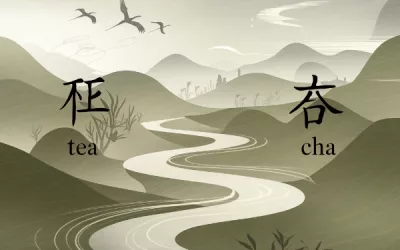Did you know that the East India Company, originally established to facilitate trade, eventually became a key player in colonising India? Founded in 1600, this powerful trading entity not only altered the course of British history but also left a profound legacy on modern India. Understanding the East India Company’s complicated history is crucial, as it holds lessons about economic imperialism and its long-lasting impacts. This article will delve into its origins, expansion, political influence, decline, and lasting effects on local economies and cultures.
Table of Content
- What was the East India Company?
- How did the East India Company expand its trade?
- What role did the East India Company play in British imperialism?
- Military engagements, alliances with local rulers, establishment of administrative structures
- Economic exploitation, transition to direct British rule
- How did the company justify its political actions?
- What were the consequences of its political involvement?
- How did it shape British perceptions of India?
- What were the causes of the East India Company’s decline?
- What impact did the East India Company have on local economies in India?
- What was the East India Company’s involvement in the slave trade?
- What is the legacy of the East India Company in modern India?
- How can we critically analyse the East India Company’s history?
- Conclusion
What was the East India Company?
The East India Company, also known as the Honourable East India Company, was a British trading enterprise established in 1600. This company received a royal charter from Queen Elizabeth I, granting it a monopoly on trade between England and the East Indies. Initially, the company’s primary purpose was to capitalise on the lucrative spice trade, which was dominated by the Portuguese and Dutch at the time.
The company initially focused on importing spices like pepper, cloves, and nutmeg, but over time, it expanded its trade to include textiles, tea, and other commodities. To facilitate its operations, the East India Company established several trading posts along the Indian coastline.
These trading posts later evolved into full-fledged colonies. The company also faced fierce competition from other European powers, such as the Dutch East India Company and the Portuguese Estado da Índia.
What were the key motivations behind its establishment?
The establishment of the East India Company was driven by several key motivations:
- Economic Gain: The primary motivation was to profit from the spice trade, which was extremely lucrative. Spices were highly valued in Europe for their culinary and medicinal properties.
- Monopoly Power: The British Crown aimed to break the Portuguese and Dutch monopoly on the spice trade by establishing their own company.
- National Prestige: Establishing a trading company was also a matter of national pride. England wanted to assert its presence in global trade.
- Political Influence: The company served as an extension of British political influence, helping to establish British dominance in the region.
The East India Company was unique in its charter and the extent of its powers. Unlike other trading companies, it could negotiate treaties, maintain armies, and even wage war. This level of autonomy set it apart and allowed it to grow into a significant political and military power in India.
How did it differ from other trading companies of the time?
The East India Company differed from other trading companies in several ways:
- Charter Powers: The royal charter granted it extensive powers, including the ability to mint money, form alliances, and build forts.
- Military Force: The company maintained its own private army, which was used to protect its interests and expand its territories.
- Political Influence: It wielded significant political influence, acting almost as a sovereign entity in its areas of operation.
- Trade Exclusivity: The monopoly on trade with the East Indies gave it an advantage over other European trading companies.
These unique attributes allowed the East India Company not only to engage in trade but also to control vast territories and populations.
What were the initial challenges faced by the company?
In its early years, the East India Company faced several challenges:
- Competition: The company faced intense competition from established Dutch and Portuguese traders who already had a strong foothold in the spice trade.
- Logistics: Managing long sea voyages and establishing reliable supply chains was a significant logistical challenge.
- Local Resistance: The company encountered resistance from local rulers and populations who opposed foreign intervention.
- Financial Risks: High initial investments and the uncertainty of long-term profitability posed financial risks.
Despite these challenges, the company managed to establish itself as a dominant force in global trade.
The story of the East India Company wouldn’t be complete without mentioning the Battle of Plassey in 1757. This pivotal event marked the company’s transformation from a trading entity to a political power.
Led by Robert Clive, the company’s forces defeated the Nawab of Bengal, establishing British rule in India. This victory not only consolidated the company’s power but also laid the foundation for British colonialism in India.

How did the East India Company expand its trade?
The East India Company (EIC) expanded its trade through strategic alliances, military conquests, and establishing trading posts across Asia and beyond. They leveraged their naval power to dominate sea routes and built relationships with local rulers and merchants.
This allowed them to monopolise key products and control vast regions. Over time, their trading portfolio diversified significantly, covering a wide range of goods from spices to textiles.
The table below showcases the key products traded by the East India Company, their origins, significance, and the year they were introduced into the trade portfolio. By examining this table, you can see how the EIC’s focus shifted and expanded, reflecting the company’s growing influence and changing market demands.
| Product | Origin | Significance | Year of Introduction |
|---|---|---|---|
| Spices | India, Indonesia | Essential for preserving and flavouring food | Early 1600s |
| Textiles | India | High demand in Europe, especially cotton fabrics | Mid-1600s |
| Tea | China | Became a staple drink in Britain | Early 1700s |
| Opium | India | Traded to China in exchange for tea | Late 1700s |
| Saltpetre | India | Vital for gunpowder production | Early 1600s |
| Indigo Dye | India | Used for colouring textiles, high value in Europe | Mid-1600s |
| Porcelain | China | Luxury item in Europe, symbol of wealth | Early 1700s |
What were the key strategies used by the East India Company to dominate trade?
The East India Company employed several strategies to dominate trade. They didn’t rely on one single method but a combination of tactics that ensured their supremacy:
- Strategic Alliances: Formed alliances with local rulers and merchants to secure favourable trading terms.
- Military Force: Used military power to capture and control key trading ports and territories.
- Monopolisation: Secured exclusive rights to trade specific goods, reducing competition.
- Naval Strength: Built a powerful navy to protect their trade routes from pirates and rival nations.
- Infrastructure Development: Established factories, warehouses, and trading posts to streamline operations.
These strategies allowed the EIC to control vast trade networks and accumulate immense wealth. Their success wasn’t just about commerce; it involved understanding and manipulating local politics, economies, and societies.
What impact did the East India Company’s trade have on the local economies?
The East India Company’s trade had far-reaching impacts on local economies. While it boosted some sectors, it also had several adverse effects:
- Economic Disruption: Traditional industries sometimes suffered due to the influx of British goods.
- Agricultural Shifts: Farmers were often forced to grow cash crops like indigo and opium instead of food crops.
- Wealth Drain: Profits were primarily sent back to Britain, leading to a wealth drain in the colonies.
- Infrastructure Development: Built roads, ports, and warehouses that modernised some areas.
- Employment: Created jobs in trading posts and related industries but often under exploitative conditions.
These impacts show a mixed legacy, where economic growth and modernisation came at the cost of exploitation and disruption.
In the 17th century, the East India Company faced fierce competition from the Dutch East India Company (VOC). The rivalry led to several naval conflicts and economic battles. One notable incident was the Amboyna Massacre in 1623.
The Dutch captured and executed 10 EIC employees in Ambon, Indonesia, accusing them of conspiracy. This event heightened tensions between the two companies and nations, ultimately influencing British foreign policy in Asia.
I remember my history professor sharing an intriguing story from his trip to India. He had visited the remnants of an old EIC warehouse in Kolkata. The place was dilapidated, but you could still sense the history.
He described how standing there, he felt the weight of centuries of trade, exploitation, and conflict. It was a tangible connection to the past, making the lessons of colonial history all the more real and poignant.
What role did the East India Company play in British imperialism?
The East India Company (EIC) wasn’t just your run-of-the-mill trading corporation. This bad boy played a colossal role in shaping British imperialism, particularly in India. Picture a gang of shrewd businessmen morphing into military strategists, political powerhouses, and crafty administrators all wrapped up in the guise of a trading entity. Sounds like the plot of a blockbuster movie, right? But nope, this was real life and almost everyone in India during that era had a front-row seat.
Military engagements, alliances with local rulers, establishment of administrative structures
So, how did a bunch of traders end up running a country? It all started with a bit of muscle flexing, followed by some smart politicking. The EIC kicked things off with military engagements. They weren’t shy about picking up a musket now and then.
- Military Brawn: With a private army that rivalled some national ones, the EIC engaged in a series of battles like the Battle of Plassey in 1757, which effectively gave them control over Bengal. Just tiny skirmishes, y’know?
- Friendly Alliances: They didn’t just rely on brute force; they were diplomatic too. They forged alliances with local rulers who fancied a bit of European backing. After all, who could resist the allure of fancy European goods and powerful cannons?
- Bureaucratic brain: Once they had the military and political foothold, it was time to play government. They established heavy-duty administrative structures, complete with tax collectors, revenue officers, and courts. Yup, they went from importing spices to running justice systems.
Economic exploitation, transition to direct British rule
It wasn’t all muskets and memos, though. The EIC had a knack for squeezing every penny out of India. They became the overlords of economic exploitation, treating Indian resources like their personal piggy bank.
- Resource Drain: They shipped out Indian goods like textiles and spices and forced cash crops like indigo, opium, and tea. Bad news for the local economy but goldmine for the EIC.
- Monopoly Madness: They had monopolies on various trades, effectively shoving local tradesmen out of business. Talk about playing the game with all the cheat codes.
- Transition Time: Eventually, the British Crown realised they could do an even better job. So, they snatched control after the Indian Rebellion of 1857. That was the EIC’s swan song, and direct British rule began.
How did the company justify its political actions?
Ah, justification – the art of making dodgy actions sound noble. The EIC had that down to a fine art.
- Civilising Mission: They claimed they were there to civilise the “savage” lands. A bit condescending, right? But it worked for them.
- Economic Development: They told everyone they were bringing economic prosperity to India. Conveniently ignoring the fact that most profits were heading straight back to Britain.
- Law and Order: They argued their presence brought stability. Never mind the fact that they often stoked conflict to justify military action.
The EIC had a knack for spinning their actions as beneficial for India. It was like bad-tasting medicine – supposedly good for you, but really, it was just bitter.
What were the consequences of its political involvement?
The EIC’s political shenanigans had some pretty significant ripple effects. Picture tossing a boulder into a pond – the splash was enormous, and the waves reached far and wide.
- Economic Downfall: Indian industries, like textiles, were decimated. It wasn’t pretty – think widespread poverty and famine.
- Social Upheaval: The social fabric of India was altered. They imposed Western legal systems, education, and even fashion. Quite the makeover.
- Rise of Nationalism: Despite their best efforts to keep things under control, discontent brewed. This set the stage for the Indian independence movement.
So, the EIC’s actions weren’t just a historical footnote. They had long-lasting, sometimes devastating, effects on India’s economy, society, and trajectory.
How did it shape British perceptions of India?
The EIC also meddled with how Brits saw India. Spoiler: it wasn’t a balanced view.
- Exotic Fantasy Land: Many Brits saw India as this mystical, exotic paradise. Thanks to writers, artists, and EIC officials, tales of elephants, maharajas, and spice markets fuelled imaginations.
- Economic Goldmine: On the flip side, it was also seen as a land of opportunity. Riches to be made, adventure to be had – India was the Wild East.
- Civilising Burden: Lastly, India was viewed as a place to be ‘civilised’. This paternalistic attitude justified a lot of the controlling behaviour.
So, whether it was through tales of opulence, economic potential, or superiority complexes, the EIC shaped perceptions that lingered in British consciousness.
During the Indian Rebellion of 1857, a fascinating character emerged – Rani Lakshmibai, the Queen of Jhansi. Known for her fierce resistance against the British, she became a symbol of Indian rebellion.
Dressed as a warrior, wielding a sword, and fighting on horseback, she led her troops with fearless grit. Despite her eventual defeat, her tenacity and bravery remain legendary, embodying the resilient spirit of India against the backdrop of British imperial ambitions.
The saga of Rani Lakshmibai reminds us that history isn’t just facts and dates; it’s also stories of courage and resistance that echo through time.
What were the causes of the East India Company’s decline?
Alright, so you’re curious about what sank the mighty East India Company, are you? Let’s dive in and unearth a tale stacked with intrigue, backstabbing, and just a smidgen of rebellion.
Firstly, the company became too big for its boots, messing around in politics and governance. The British Government wasn’t too thrilled about this and started tightening the noose, legislatively speaking.
Acts like Pitt’s India Act (1784) and the Government of India Act (1833) clipped the company’s wings. They had a nosey board keeping an eye on them and even had to report to the Crown.
Secondly, economic competition started nipping at their heels. Fellow European traders and emerging local competitors didn’t make things any easier.
But, the real kicker? The Indian Rebellion of 1857. An uprising that highlighted their incompetence once and for all. They lost any ounce of legitimacy they had, and the blame game began.
And don’t forget, public opinion turned on them like a hungry cat spots a dangling piece of meat. Corruption, cruelty, and colossal mismanagement were splashed across the papers. People began to realise that maybe, just maybe, the EIC weren’t the heroes of the day.
Eventually, this led to the British Crown stepping in and saying, “Alright, enough’s enough. We’ll take it from here.” In 1858, the Crown officially took over, bringing the curtain down on the East India Company’s shenanigans.
How did the company’s actions contribute to its downfall?
The East India Company wasn’t exactly known for subtlety. Their actions, or should we say, blunders, led to their undoing. Here’s a breakdown:
- Military Aggression: They expanded their territory through brute force, leading to constant conflicts and rebellions.
- Economic Exploitation: Their exploitative policies drained Indian resources and wealth, leaving the local economy in shambles.
- Administrative Ineptitude: Their mismanagement and corruption were legendary, from dodgy deals to inefficient governance.
- Religious Insensitivity: They meddled in local customs and traditions, causing widespread resentment.
- Overreaching Power: They went beyond trade and started governing, something they weren’t trained or equipped to handle.
These actions created a powder keg that eventually exploded in 1857 with the Indian Rebellion, exposing their vulnerabilities.
What role did public opinion play in its decline?
Public opinion was the East India Company’s relentless nemesis. At first, they were hailed as brave adventurers and traders, but the honeymoon didn’t last. Here’s a taste of how public perception shifted:
- Media Coverage: Newspapers and pamphlets exposed their corrupt practices and mismanagement, swaying public sentiment.
- Scandals and Corruption: Tales of bribery, extortion, and cruelty spread like wildfire, painting them as villains rather than heroes.
- The Indian Rebellion of 1857: Highlighted their brutal suppression tactics and inability to govern, turning public opinion decisively against them.
- Influential Critics: Figures like Edmund Burke criticised them in Parliament, labeling their rule as despotic and arbitrary.
- Economic Discontent: Their monopoly and trade practices angered British merchants and manufacturers, leading to increased political pressure.
Public opinion didn’t just hurt their image; it influenced crucial legislative changes that curtailed their power.
How did the British government respond to the company’s decline?
The British government wasn’t going to sit by and watch their controversial cash cow run amok. They stepped in with surgical precision. Here’s how they did it:
- Pitt’s India Act (1784): Introduced a dual system of control, bringing the Company’s affairs under more direct governmental supervision.
- Government of India Act (1833): Stripped the Company of its commercial functions, making it a geographical and administrative manager instead.
- Parliamentary Inquiries: Launched investigations into their operations, exposing corruption and inefficiency.
- Military Oversight: The British military took a more hands-on role in Indian affairs post-1857, reducing the Company’s influence.
- The Government of India Act (1858): Officially transferred all administrative powers from the Company to the British Crown, effectively marking the end of its rule.
This intervention by the government was both a response to public pressure and a strategic move to consolidate British control over India.
In 1773, Warren Hastings, the first Governor-General of Bengal, was impeached upon returning to England. His trial lasted seven years and became one of the most famous legal cases of the era. Hastings was eventually acquitted, but the trial exemplified the growing scrutiny and criticism of the East India Company’s officials.
The lengthy trial was a spectacle, with politicians like Edmund Burke accusing Hastings of being a tyrant, which further shaped the public’s negative views on the company and hastened its decline. Hastings’ ordeal was a prelude to the broader accountability the Company would face, ultimately leading to its end.
What impact did the East India Company have on local economies in India?
The East India Company didn’t just pop in for a bit of tea and crumpets. Oh no, they reshaped India’s local economies in ways that still ripple today. From altering agricultural practices to shaking up trade routes, their influence was ginormous. Let’s break it down, shall we?
The East India Company introduced several changes that upended India’s local economies. They didn’t ask nicely either; they bulldozed their way through with policies that suited their profit margins. First, they tweaked agricultural practices by pushing Indian farmers to grow cash crops like opium, cotton, and indigo instead of food crops. Starving but profitable!
Another gem in their treasure chest of disruption was the annihilation of local industries. Traditional weaving and metalwork industries were side-lined, making way for British manufactured goods. As a result, many skilled artisans found themselves polishing their unemployment skills instead.
Then there were the taxation policies, which were more like a financial black hole for Indian peasants. High taxes led to widespread economic disparities, putting a serious dent in community welfare.
Trade routes weren’t spared either. The East India Company reconfigured them to ensure that goods flowed smoother than a cup of Darjeeling tea – but only in their favour. They prioritised sea routes to Britain, displacing centuries-old land trade paths.
How did local economies adapt to the company’s practices?
Adapt would be a generous term here. ‘Survived’ is probably more apt. When the East India Company rolled in, local economies had to contend with an assortment of troubles.
- Shift to Cash Crops: Farmers were forced to focus on cash crops like opium and cotton, as mandated by the company. This wasn’t a pivot; it was more of a shove.
- Disruption of Traditional Industries: Local industries such as weaving faced extinction because mass-produced British goods flooded the market. Artisans had to switch trades or face financial ruin.
- Revised Taxation Structures: The Company often imposed heavy taxes. Farmers and workers had to endure financial burdens, further aggravating poverty.
- Emerging Middlemen Classes: New classes of middlemen and local agents emerged, capitalising on the opportunity to work as intermediaries between the locals and the Company.
- Altered Trade Practices: Adaptation also meant redirecting trade activities. Coastal trading ports flourished, while inland trading hubs suffered.
Let’s be clear: adapting to the company’s practices often meant dealing with exploitation and trying to find a lifeboat on a sinking ship. These changes were seldom beneficial for the local population.
What were the long-term economic effects on India?
When it comes to long-term economic effects, the East India Company left a legacy akin to a tornado’s aftermath – structural and systemic damage.
- Economic Disparities: The rich-poor gap widened, as those who managed to bend the knee fared slightly better than those who resisted.
- Decline in Agrarian Society: The introduction of cash crops led to a decline in traditional agricultural practices, resulting in food shortages and famines.
- Industrial Backwardness: With local industries wiped out, India lagged behind in industrial development, a gap that took decades to bridge post-independence.
- Land Revenue Systems: The British land revenue policies permanently altered land ownership patterns, affecting agricultural productivity.
- Dependency on British Goods: Local economies became heavily reliant on British imports, stifling indigenous manufacturing and economic self-sufficiency.
By the time the British Raj took over from the East India Company, India’s economic health had received a battering that would be felt long after independence.
How did the company influence trade routes?
Ever watched a power play unfold? The East India Company was a maestro. They didn’t just influence trade routes; they re-engineered them to suit their bustling empire.
- Prioritised Sea Routes: With an eye on the globe, they focused on maritime routes, solidifying ports like Calcutta, Bombay and Madras as trade hubs.
- Disrupted Inland Routes: Traditional overland routes and caravan paths became secondary, affecting inland trading communities negatively.
- Export-Oriented Infrastructure: Infrastructure, from roads to ships, was built to facilitate the export of goods like cotton, indigo, and opium, mainly to Britain.
- Strangling Regional Trade: Regional trade was strangled as local industries couldn’t compete with British goods flooding the market, severely impacting regional economies.
- Monopoly Over Commerce: They maintained a monopoly on trade, dictating terms favourably for British merchants and unfavourably for Indian traders.
This influence wasn’t beneficial to local merchants or economies but worked wonders for British coffers.
Back in the day, the East India Company had Lieutenant William Hawkins land in India in 1608 with grand ambitions. Hawkins, with his royal credentials, aimed to woo Emperor Jahangir with promises of English alliance and dazzling trade opportunities.
Jahangir, intrigued yet sceptical, granted Hawkins and the Company initial trade privileges but wary of the Company’s British motives, kept them on a tight leash. Little did he know, this was merely the prologue to a centuries-long epic of economic upheaval and imperial dominance. And here we are, still unpacking their vast chest of impacts.
What was the East India Company’s involvement in the slave trade?
Oh, the East India Company—not just your average, tea-pushing business. While it might be famous for ruling over large chunks of the Indian subcontinent and importing spices and silks, it also dabbled in the dark business of slavery. Yes, you read that right. This mighty entity, which practically had more power than your average nation-state, had its fingers deep in the murky waters of the slave trade.
The East India Company transported enslaved individuals to various British colonies, leveraging them as cheap labor for their economic empire. They didn’t just stop at being ‘delivery boys’; the company had economic motivations as grim as they could get. Cheap labour equalled higher profits, and who doesn’t want more jingling coins in their coffers?
The impact of these actions was catastrophic for African and Indian populations. African regions saw an exodus of their strongest men and women, while parts of India became transit points, reducing human lives to mere commodities. The company’s legacy in this regard is, let’s say, less “to be continued” and more “to be questioned.”
How did the company’s actions shape perceptions of the slave trade?
The East India Company’s dabbling in human misery significantly coloured public perception.
- It normalised the commodification of human lives, making the trade seem just another business venture.
- It added a veneer of legitimacy, portraying the practice as somehow less abhorrent and more ‘necessary’ for economic growth.
- It reinforced class and racial hierarchies, perpetuating the idea that certain groups existed to serve others.
- It lent a commercial edge to colonialism, showing that imperialist ambitions and economic benefits were two sides of the same coin.
These actions made it difficult to separate economic imperialism from moral corruption.
What were the ethical implications of its involvement?
When your company motto is basically “profit above people,” ethics tend to get sidelined.
- Commodification of human lives shattered the moral fabric of societies.
- Perpetuation of violence and subjugation affected millions, turning land into lawless battlegrounds.
- Cultural destruction erased entire ways of life, sapping spiritual and communal bonds.
- Economic disparity was exacerbated, making the rich richer while driving the poor even deeper into squalor.
It was not just unethical but downright inhuman, impacting societies on multiple levels and across continents.
How does this aspect affect the company’s legacy today?
The company’s tarnished legacy sticks out like a sore thumb in modern discourse.
- Historical studies now scrutinise the Company through a critical lens, showing its darker side.
- Public memory is evolving, with monuments and symbols often facing calls for removal or re-contextualisation.
- Ethical considerations shadow business practices today, owing much to the horror displayed by entities like the East India Company.
- It prompts discussions on reparations, cultural renewal, and the rewriting of colonial histories to include marginalised voices.
Just like the haunted presence of ghost ships on stormy seas, the company’s legacy looms ominously over modern interpretations of colonial histories.
During the late 18th century, Captain Sir Henry Newton was an officer within the East India Company. Picture this: Sir Henry Newton and his men on a voyage, heading towards the Indian Ocean, not just to secure spices but also to secure humans as commodities.
The ship’s human cargo held African slaves bound for Indian and Southeast Asian colonies, embodying the grim intersection of colonial aspirations and economic greed. Newton’s diary revealed that he saw his cargo as both human and merchandise—a horrifying duality that sums up the ethics, or lack thereof, within the East India Company’s practices.
So, the next time you sip your Earl Grey, imagine the tangled web of tea, spices, and human lives that once sustained the East India Company.
What is the legacy of the East India Company in modern India?
The legacy of the East India Company in modern India is a complex tale interwoven with narratives of exploitation, economic transformation, and cultural amalgamation. This business venture, wrapped in the garb of a trading entity, ended up scripting one of the most significant chapters in India’s colonial history. Let’s dive deep into the remnants of its existence that linger in contemporary India.
From reshaping economic structures to influencing political relationships, the East India Company’s impact is pervasive. The economic mechanisms set up during its reign laid the groundwork for modern India’s financial institutions. Imagine a complicated web of taxes and trade routes that began centuries ago but still function in today’s India.
Political relationships? Oh, they were utterly and irrevocably altered. The Company’s divide-and-rule policies stoked communal tensions that have had lasting repercussions. Cultural influences? A delightful, sometimes unsettling, mix of British and Indian elements that still colour everything from language to architecture.
And let’s not forget the endless debates about colonialism that this legacy fuels. Was it development or exploitation? What does justice look like today?
How is the company’s history remembered in India today?
In modern India, the East India Company’s history is akin to an old, musty book you find at the back of a library. It’s remembered vividly, sometimes fondly, but mostly with a sense of scepticism and caution.
You’ll find historians, students, and educators dissecting this period with almost surgical precision. Some narratives focus on the exploitation and the significant plundering of resources. Others argue that the Company laid the groundwork for a modern administrative and legal system.
The Popular Perspectives:
- Exploitation: The draining of India’s wealth, often referred to as the “drain theory,” is a sore spot.
- Modernisation: Some see the introduction of railways, telecommunication, and Western education as a mixed blessing.
- Cultural Fusion: British cultural influence blending with Indian traditions. Finglish, anyone?
- Political Strife: Many remember the Company as the instigator of communal divisions that haunt India to this day.
- Resistance: Celebrations of Revolt leaders like Rani Lakshmi Bai and Mangal Pandey keep the memory alive.
There’s a continuous balancing act between resentment and recognition, making its remembrance multi-faceted.
What lessons can be drawn from its legacy?
Oh boy, where do we start? The East India Company’s legacy is a goldmine of lessons, especially when viewed through modern spectacles.
Key Takeaways:
- Economic Lessons: Don’t put all your economic eggs in one basket. Diversification is vital to avoid exploitation.
- Political Strategy: The perils of ‘divide-and-rule’ tactics that can fracture societal bonds.
- Cultural Sensitivity: Appreciate and preserve the local culture to avoid conflicts and resentment.
- Historical Impact: Understanding past exploitation can fuel present-day debates about reparations and justice.
- Administrative Innovations: Effective governance structures can be a double-edged sword if misused.
The Company’s history teaches that economic development minus ethical considerations is a recipe for disaster. It stresses the importance of remembering the human cost of political and economic policies.
How does it influence current socio-economic conditions?
Even today, the East India Company’s influence is a ghostly whisper in India’s socio-economic landscape.
Ongoing Influences:
- Economic Policies: Many of the tax structures and trade practices have roots in colonial times.
- Bureaucratic Structures: The administrative setup initiated by the Company has evolved but still follows a similar skeleton.
- Social Stratification: The Company’s actions deepened caste and communal divides which are still prevalent.
- Legal Systems: The judicial framework has its origins in British common law, courtesy of the East India Company.
- Cultural Hybridity: From the English language to education systems, the East India Company’s impact is palpable.
India’s current socio-economic conditions continue to be shaped by the legacies of colonial economic policies and the social fabric’s historical churning. Tackling these issues often requires an understanding of where they originated, providing context for modern solutions.
During the Mutiny of 1857, also called the Sepoy Mutiny, the Company’s own hired soldiers led one of the earliest uprisings against colonial rule. Sparked by rumours that new rifle cartridges were laced with cow and pig fat (offensive to both Hindu and Muslim religions), the mutiny was a significant blow to the Company’s control.
Don’t you just love it when the mighty fall because of something as (seemingly) minor as rifle cartridges?
In the end, however, the noise around the Mutiny led to the British Crown taking direct control of India in 1858, marking the end of the East India Company’s reign but the beginning of a more institutionalised form of British control, leaving a legacy that’s debated and dissected till today.
How can we critically analyse the East India Company’s history?
East India Company – just the name evokes images of traders and tyrants, spices and subjugation. To truly understand its history, one must dive into a swirl of historiographical debates, stakeholder perspectives, and primary sources. By doing a critical analysis, we can uncover the company’s nefarious exploits and get to the heart of complex historical events.
A critical analysis isn’t just about rattling off dates and events. It’s about digging deeper, asking questions, and piecing together puzzles from bits of evidence scattered across time. It’s like being a history detective but without the trench coat and magnifying glass.
What are the main schools of thought regarding the company’s impact?
When it comes to the East India Company, scholars tend to form camps like kids on a schoolyard. You’ve got your imperial apologists, the economic gainers, and perhaps the most vocal, the outraged nationalists.
- Imperial Apologists: They argue that the company brought modernisation, infrastructure, and economic development to the colonies, touting the so-called “civilising mission”.
- Economic Gainers: This group emphasises the colossal wealth generated – for Britain, that is. They focus on trade routes, commodity exchanges, and profits.
- Outraged Nationalists: These folks highlight exploitation, looting, and the subjugation of native populations. They hoot and holler about economic drain theory – and for good reason.
- Cultural Historians: They look at the synthesis of cultures, the mingling of British and Indian customs, and how this intercultural exchange affected societal norms.
- Postcolonial Critics: These scholars scrutinise the long-term effects of colonisation, arguing that the company’s rule left lasting scars on the socio-economic fabric.
Critically analysing these schools offers a more nuanced picture of history. Without this mingling of thoughts, we’d be stuck with a one-sided story, and where’s the fun in that?
How can primary sources enhance our understanding?
Using primary sources is like finding the original recipe for grandma’s secret sauce – it’s eye-opening.
- Letters and Correspondence: Company officials wrote lengthy letters describing everything from trade deals to political machinations.
- Company Records: Logs that recorded exports, imports, and revenues give us a glimpse into the economic engine of the beast.
- Local Accounts: Chronicles and diaries from the colonies offer perspectives from those on the receiving end of imperial expansion.
- Government Reports: British parliamentary inquests and investigations into the company’s misdemeanours provide a legal and procedural viewpoint.
- Newspapers and Pamphlets: Media of the time drummed up or denounced the East India Company’s actions, showing public sentiment and propaganda.
By diving into these materials, we bring forward genuine voices from history, making the narrative richer and more textured.
Why is it important to consider multiple perspectives?
No two people see the world the same way, and the same goes for history. Taking in multiple viewpoints doesn’t just add colour to our black-and-white textbook facts; it paints a more accurate picture.
- Bias Check: Helps identify and reduce the bias in historical accounts by incorporating different viewpoints.
- Complexity: Reflects the inherently complex nature of history, showing that events aren’t just black and white.
- Empathy: Supports understanding and empathising with different experiences, particularly those who were oppressed.
- Narrative Balance: Ensures that no single perspective dominates and distorts the historical narrative.
- Critical Thinking: Enriches critical analysis skills by challenging students and historians to consider various angles.
Considering these multiple angles may initially seem chaotic, but when pieced together, it offers a more holistic view of the East India Company’s influence.
During the 1770s, Warren Hastings, the first Governor-general of India, came under fire for his role in expanding the East India Company’s rule over India. What started as a career aimed at bringing order soon spiralled into allegations of corruption and tyranny.
Hastings’ impeachment trial, which kicked off in 1788, lasted a decade and became a public spectacle in Britain. He was accused of extortion, embezzlement, and outright plunder. Hastings survived the trial – let’s call him the slimy eel of British politics – but his case highlighted the dark underbelly of the East India Company’s operations.
This episode underlined the importance of transparency and accountability and serves as a historical reminder of the excesses that unchecked corporate power can perpetrate.
Conclusion
As I reflect on the intricate history of the East India Company, it becomes evident that its influence extends far beyond the confines of trade and commerce. Established in 1600, this trading enterprise not only transformed the economic landscape of subcontinental India but also laid the groundwork for a complex interplay of politics, culture, and societal change that would resonate for centuries.
The company initially sought wealth through trade, but as its power expanded, so too did its ambitions, shaping events that would lead to the establishment of British imperialism in India.
The implications of the East India Company’s actions are profound. They illuminate how economic motives can entwine with political ideologies, leading to significant consequences for both the colonisers and the colonised.
The transition from a trading enterprise to a governing body highlights how commercial interests evolved into imperial ambitions—events that continue to shape British perceptions of India and vice versa. As I ponder this monumental shift, it becomes vital to understand its legacy, reflected in contemporary Indian society and its ongoing struggles with colonial history.
Moreover, this exploration raises meaningful questions about the paths once taken and the lessons that remain relevant today. It compels us to investigate further—how can understanding such a history inform our present socio-economic conditions? What critical insights about global trade, ethics, and cultural exchange can we derive from scrutinising the company’s multifaceted legacy?
In closing, I am reminded of a powerful quote that resonates with this discourse: “Those who cannot remember the past are condemned to repeat it.” This serves as a poignant reminder that while the East India Company’s legacy is multifaceted and complex, the scrutiny of its history—through various lenses and interpretations—provides us with crucial insights.
It prompts us to consider not just what was lost in the wake of colonialism but also what can be gleaned as we address the consequences of such historical narratives in our contemporary world.❖
Resources
- Documenting the British East India Company and their Involvement in the East Indian Slave Trade
- Introduction: Slavery and Colonial Expansion in India
- The East India Company – Oxford Academic
- East India Companies and Long-Term Economic Change in India
- History and Historiography of the English East India Company: Past and Present
- Empire of Free Trade: The East India Company and the Making of the Colonial Marketplace







